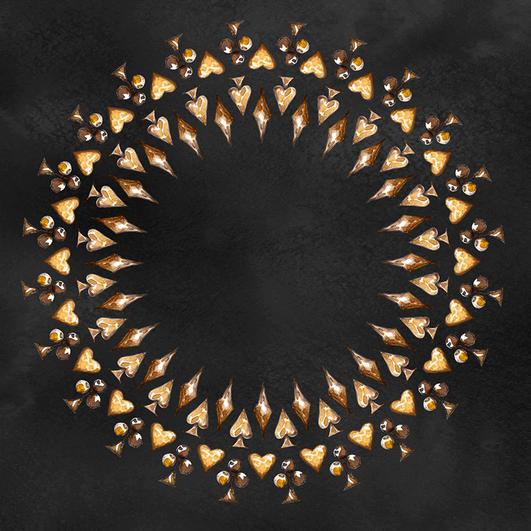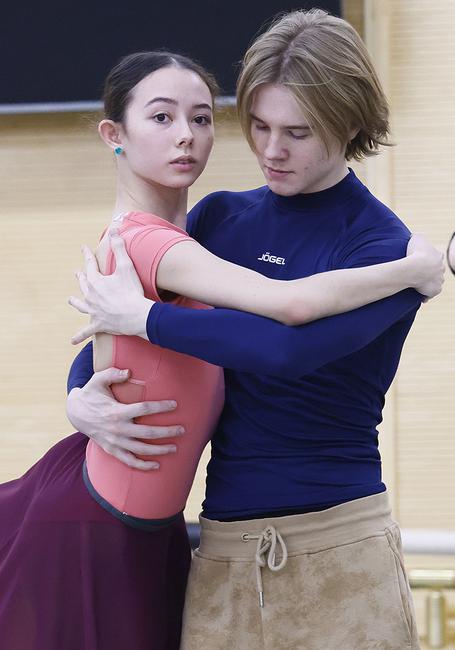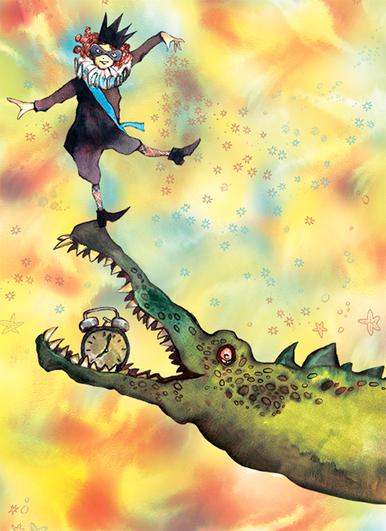
The story of its creation connected the Bolshoi Theatre and the Mariinsky Theatre (in those days, the State Academic Opera and Ballet Theatre, and a little later — the Kirov Opera and Ballet Theatre) with an inextricable thread. Year 1934. It is believed that Sergei Radlov, the then head of the Kirov Theatre, invited his long-time acquaintance and chess partner Sergei Prokofiev to compose a ballet based on the plot of the tragedy Romeo and Juliet. (Subsequently, Lavrovsky would write that although Radlov no longer had anything to do with the final version of the libretto, he nevertheless considered it necessary to keep his name in the list of authors, since it was to Radlov that the idea to choose this Shakespearean play as a literary source had been born). Meanwhile, in the composer’s version of events, the authorship of the idea was “attributed” to another person — a playwright, critic, theatre scholar and, in addition, artistic director of Lenfilm, Adrian Piotrovsky: “At the end of December (1934) I returned to Leningrad specifically for negotiations with the Kirov Theatre. I expressed my desire to find a lyrical plot for a ballet... We started going through the stories: Piotrovsky named Pelléas et Mélisande, Tristan and Isold, Romeo and Juliet. I immediately “clutched” the last story — it could not have been better!” But in any case, Piotrovsky’s name could no longer appear on the premiere posters of 1940: in 1937 he had been arrested and shot.
Prokofiev, who by that time had already been the author of several one-act ballets created for Diaghilev’s enterprise, learned the structure of the Soviet “grand style” ballet while watching the aforementioned other drambalet, which was destined to survive to this day — The Fountain of Bakhchisarai. Initially, it was assumed that Rostislav Zakharov, who staged this ballet, would also work on the production of Romeo and Juliet. In May 1935, he even managed to take some part in the “scenario” development.
However, the agreement with the Kirov Theatre was never concluded, but the Bolshoi expressed interest in staging this ballet and ordered the music. The rough score of the future internationally recognised ballet was written in record time: just two months. On the 4th of October 1935 — a sad but memorable date in the history of the Bolshoi Theatre — an open audition took place in the Beethoven Hall, filled to capacity at the beginning and almost empty by the end. Even the fact that the author himself was at the piano did not stop the listeners from leaving.
Perhaps the most famous story about love in the world cannot but provoke “challenging” thoughts about what would have happened to Romeo and Juliet if they had remained alive. No, the co-authors of the libretto headed by Prokofiev, of course, did not at all intend to give a detailed answer to this question, however they did plan a happy ending. In the original version, the Verona lovers did not die. The happy ending, “contrary” to Shakespeare, was met, to put it mildly, with disapproval. And not only by Shakespeare scholars who were present at the ill-fated audition. As for the artists and musicians, they considered that music “non-ballet” and unsuitable for dancing. The matter came to a standstill. For a year the composer was in limbo, but in the end the Bolshoi abandoned the production.
Prokofiev explained the intention to save the characters’ lives with “choreographic reasons”: “Living people can dance, but dying people cannot dance lying down". But then he had not yet had Leonid Lavrovsky as a co-author, for whom this consideration did not become an obstacle and who used the scene of the death of the characters triumphantly and masterfully to the best effect. The truth is, he could have had such an opportunity two years before the premiere at the Kirov Theatre: it was assumed that he would stage Romeo and Juliet for the bicentennial anniversary of the Leningrad Choreographic School, but he never started the work.
As a result, the composer created two suites based on the ballet music, which were successfully premiered in Paris. And the Brno Ballet unexpectedly and boldly showed interest in staging the ballet. The world premiere of the chamber version of the ballet took place in this Czech city. The production was staged by choreographer Ivo Psota who also performed as Romeo.
However, it was the premiere at the Kirov Theatre, which took place on the 11th of January 1940, that became a turning point in the history of this ballet. Lavrovsky initiated the writing of a new edition of the libretto and obtained the composer’s consent to a number of alterations and the inclusion of additional numbers in the score, which helped the artists “come to terms” with this music (the dancers of the Kirov Theatre could not fall in love with it “at first sight” either).
The production of Lavrovsky and Pyotr Williams, who designed it, was often called a canvas in the press, because of how grandiose that ballet picture of early Renaissance Italy looked. In this performance, the love “red” line ran clearly between two hostile worlds, and the power of love was increased tenfold by the desire for freedom. In the person of the lovers and their peers, the approach of the enlightened Renaissance announced itself; with the ominous tread of the Capulet clan, the gloomy Middle Ages fiercely defended its positions; evoking associations with François Villon or François Rabelais, it derived Mercutio’s own sarcastic theme; the rapier ringing of the vendetta was opposed by the quiet peace of the cell of the Franciscan Friar Lorenzo; Brunelleschi's Florentine dome hovered over the square in Verona, and the castle was filled with ladies who looked like they had stepped out of Botticelli's paintings. Juliet, her best role, was danced by Galina Ulanova, the legendary first performer of this role both at the Kirov Theatre and at the Bolshoi. The role of Romeo was performed by her permanent partner Konstantin Sergeev (in Moscow the first Romeo would be Mikhail Gabovich). Lavrovsky’s version combined literary generality, the specificity of cinema and the emotional authenticity of drama theatre.
The outbreak of the Great Patriotic War slowed down the appearance of this ballet on the stage of the Bolshoi Theatre. But not long after its completion, in 1946, it was finally staged in Moscow. And it suited the troupe brilliantly, quickly becoming one of the best productions in its repertoire. Ten years later, when the Bolshoi Theatre’s first foreign tour to London was being prepared, it was included in the playbill for this tour. Even the impresarios considered this a very bold decision since they would show the ballet in Shakespeare’s homeland. But the performance as a whole and Ulanova in particular caused a sensation and influenced the further course of the entire history of ballet.
Almost at the end of her career, Ulanova “proved” that the rumour about her outstanding talent was not exaggerated, and established the status of a global star, and, like Chaliapin, who contributed to the incredible popularity of Boris Godunov in the West, created an aura of legend around the role of Juliet. Juliet’s famous run to Friar Lorenzo has become as much a part of mythology in the history of ballet as Natasha Rostova’s dance in her uncle’s village in the history of literature.
The performance made an indelible impression on the British choreographers Kenneth MacMillan and John Cranko. Not only did they become the authors of their own stage versions of Prokofiev’s score, but also largely changed the trajectory of the development of world ballet, which had previously preferred laconic and plotless forms. And the ballet’s music has become one of the most famous and frequently performed works of the 20th century.
The combination of Shakespeare’s great dramaturgy and Sergei Prokofiev’s score, unique in its melodic richness, ensured a high degree of interest in this ballet among potential directors: it was rare that a choreographer did not, sooner or later, come to the idea that they wanted to realise their own interpretation of this story and this music on stage. In turn, a few ballets can “present” such a number of successful productions, and of the widest spectrum – from strict neoclassicism to the most radical avant-garde options. Even a score with a happy ending did not escape a stage implementation.
The ballet Romeo and Juliet staged by Lavrovsky remained in the Bolshoi Theatre repertoire for almost five decades with some interruptions. It is constantly shown at the Mariinsky Theatre. In both theatres, the title and leading roles were danced by outstanding artists of different, successive generations.
At the Bolshoi, one of these artists was the choreographer’s son, the brilliant dancer Mikhail Lavrovsky. One of his crowning parts was Romeo. An heir and keeper of the memory, he repeatedly staged his father’s ballet in theatres in Russia and Teatro di San Carlo in Naples. And now he is returning it to the stage of its native Bolshoi Theatre. Anton Grishanin acts as conductor. Tatyana Noginova will demonstrate her vision of costumes created from the sketches by Pyotr Williams.
Leading artists of the troupe, as always, are in the title roles: Svetlana Zakharova, who has already performed the role of Juliet in Leonid Lavrovsky’s production at the Mariinsky Theatre, and Artemy Belyakov, who has performed the role of Romeo, but in a different version of the ballet; Ekaterina Krysanova and Vladislav Lantratov, who have repeatedly formed a duet in ballets based on Shakespeare; Evgenia Obraztsova — performed the title role in the production of the Mariinsky Theatre — and Artyom Ovcharenko who performed the title role at the Bolshoi in a different version of the ballet; Eleanora Sevenard and Denis Rodkin, who have already danced these roles in this production, but at the Buryat Opera and Ballet Theatre; as well as representatives of the younger generation of the Bolshoi — Elizaveta Kokoreva and Daniil Potaptsev, for whom this is not only a premiere, but also a personal debut.
The premiere series of the performances will be held on the 4th, 5th, 6th (12:00 and 19:00) and the 7th of April.



